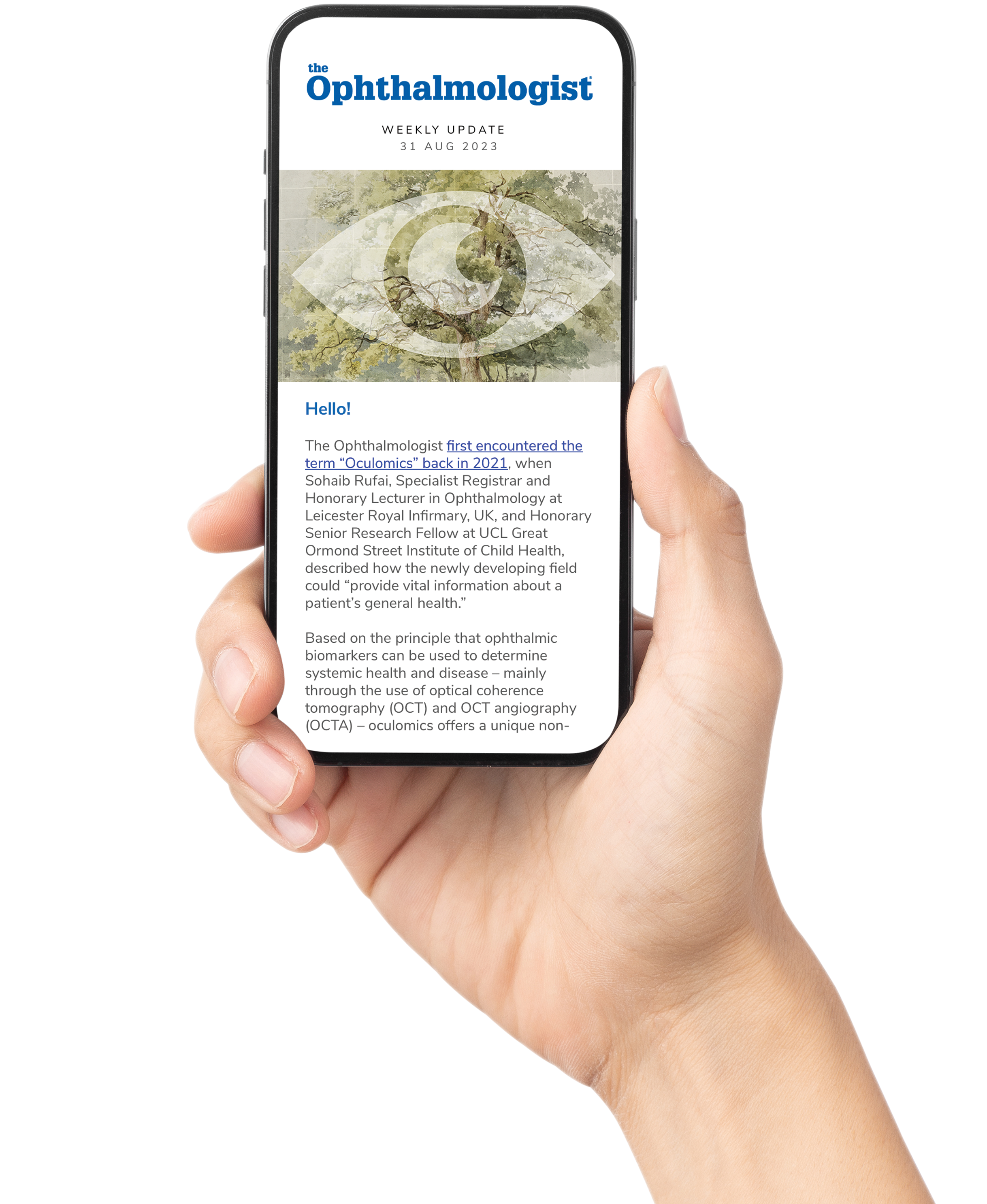Wet age-related macular degeneration (AMD) is often diagnosed late – unsurprising given that less than a third of patients are able to detect early symptoms themselves (1), but problematic because studies have shown that early detection of wet AMD is critical to maintaining functional vision (≥20/40). Though patients with poor visual acuity at diagnosis regain more letters with anti-VEGF treatment, the majority do not return to that level of vision (2). Patients being treated for wet AMD in one eye are at a higher risk of conversion in the fellow eye (3) and must be frequently monitored – a significant burden when office visits are required.
At the same time, the COVID-19 pandemic has meant that many patients have been reluctant to leave their homes, and routine exams have been canceled or postponed. The upshot? Patients at risk of developing wet AMD have not been receiving the same level of routine care. And with many practices accommodating longer intervals between treatment during the pandemic, conversion in fellow eyes is more likely to go undetected for a longer period. The pandemic has forever changed the way opthalmologists practice, and home-based remote diagnostic solutions that allow them to remotely monitor their patients’ disease are becoming invaluable tools for many practices.
One such solution for AMD sufferers and their physicians is the ForeseeHome® AMD Monitoring program. Designed by Notal Vision, the monitoring device can be prescribed to intermediate AMD patients as part of a remote diagnostic service provided by the Notal Vision Diagnostic Clinic, extending patient management from the clinician’s office to patients’ homes. In brief, by using automated AI-based alert generation, ForeseeHome helps detect wet AMD at an earlier stage, so treatment can be initiated quicker, minimizing the risk of irreversible visual acuity loss. Put simply, it is a safety net for intermediate AMD sufferers.
The AREDS2-HOME study, sponsored by the National Eye Institute (NEI), demonstrated that 94 percent of patients whose wet AMD was detected using ForeseeHome retained betterthan 20/40 vision, as opposed to 62 percent of patients whose clinicians were only using standard care detection methods, such as the Amsler grid (4). In fact, ForeseeHome usage was deemed so efficacious – patients using the device in the study lost significantly fewer letters at incident neovascularization than with standard care alone – the independent Data Safety and Monitoring Committee decided to stop the trial ahead of schedule.
Preferential hyperacuity perimetry (PHP) lies at the core of ForeseeHome technology, which assesses the central 14 degrees (or approximately 4.2 mm) of the macula (4). Invented by three ophthalmologists (Barak Azmon, Yair Alster, and Omer Rafaeli), PHP is able to detect tiny changes in the central visual field, including metamorphopsia and scotomas.
Once prescribed, patients are instructed to test their eye (or eyes) daily – patient compliance is monitored remotely by the Notal Vision Diagnostic Clinic, an independent diagnostic testing facility and medical service provider of ForeseeHome – and the results are automatically transmitted at the end of each test to the Clinic. In the background, an AI-based classifier identifies changes in visual distortions that may indicate a conversion to wet AMD by continuously comparing test data with a normative database threshold and the patient’s own baseline; when a statistically significant change of test patterns is detected, thetesting facility alerts the practice, so that they can determine the best course of action. Patient testing data can be accessed by the physician through a secure portal at any time.
The ForeseeHome AMD Monitoring Program is covered by Medicare and billed by Notal Vision Diagnostic Clinic as the healthcare provider. The clinic provides all the necessary disease education, device setup and support, patient engagement, and compliance monitoring needed by practices that refer their patients for ForeseeHome.
References
- A Parfitt et al., “Patient-reported reasons for delay in diagnosis of age-related macular degeneration: a national survey”, BMJ Open Ophthalmol, 4 (2019). PMID: 31750395.
- AC Ho et al., “The potential importance of detection of neovascular age-related macular degeneration when visual acuity is relatively good”, JAMA Ophthalmol, 135, 268 (2017). PMID: 28114653.
- RE Gangnon et al., “Severity of age-related macular degeneration in 1 eye and the incidence and progression of age-related macular degeneration in the fellow eye: The Beaver Dam Eye Study”, JAMA Ophthalmol, 133, 125 (2015). PMID: 25340497.
- EY Chew et al., “Randomized trial of a home monitoring system for early detection of choroidal neovascularization HOme Monitoring of the Eye (HOME) Study), Ophthalmology, 121, 535 (2014). PMID: 24211172
